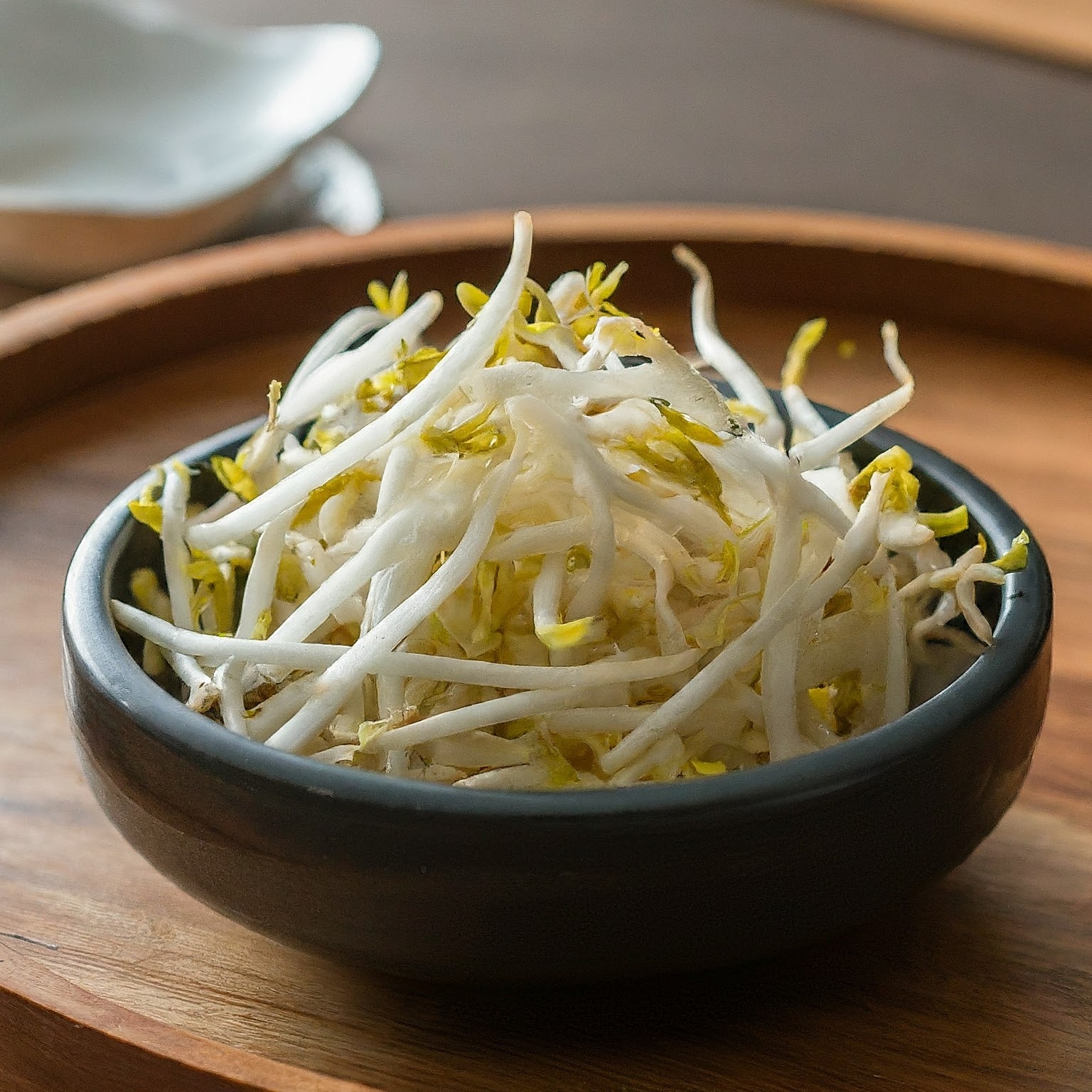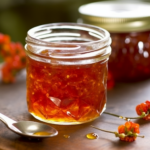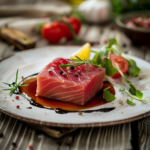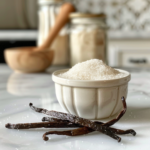Hey there, I’m Austin, and I’m excited to introduce you to a special recipe from my collection, Beyond the Bayou.
As a kid, I grew up in a household where we had a small garden, and my mom loved experimenting with different vegetables. One summer, she decided to grow bean sprouts indoors, and I vividly remember being captivated by the process of those tiny seeds turning into crunchy sprouts.
Every day, my mom would diligently care for them, ensuring they had the right amount of water and sunlight. She often incorporated them into dishes like her Bean Sprout Stir-Fry, a simple yet delicious meal that brought our family together around the dinner table.
Those memories of family, gardening, and home-cooked meals are incredibly special to me. Now, I’m thrilled to share this recipe with you. Let’s dive into the world of bean sprouts and create something wonderful together!
What Is Bean Sprout?
Bean sprouts are young shoots that grow from germinated beans or seeds. They are commonly used in various cuisines worldwide and are known for their crunchy texture and mild, slightly nutty flavor. Bean sprouts are often used fresh in salads, stir-fries, soups, and sandwiches, adding a refreshing and nutritious element to dishes. They are particularly popular in Asian cuisine, where they are frequently found in dishes like stir-fried noodles, spring rolls, and soups.
Bean sprouts are also valued for their nutritional benefits, as they are low in calories and fat while being rich in vitamins, minerals, and antioxidants. Common types of bean sprouts include mung bean sprouts and soybean sprouts, although other types of beans and seeds can also be sprouted for culinary use. This is usually eaten with Kimchi Fried Rice.
Brilliant Beans Sprouts Recipe
Equipment
- 1 Large skillet or wok
- 1 Knife
Ingredients
- 400 g about 14 oz soybean sprouts (Kongnamul)
- 2 cloves garlic minced
- 2 green onions thinly sliced
- 1 tablespoon sesame oil
- 1 tablespoon soy sauce
- 1 tablespoon toasted sesame seeds
- 1 teaspoon sugar optional
- 1 teaspoon gochugaru Korean red pepper flakes, adjust to taste
- Salt to taste
Instructions
- Rinse the soybean sprouts under cold water and remove any discolored or wilted sprouts.
- Bring a pot of water to a boil. Add the bean sprouts and cook for about 3-5 minutes until they’re just tender but still crunchy.
- Drain the bean sprouts and rinse them under cold water to stop the cooking process. Drain well and transfer them to a mixing bowl.
- Add minced garlic, sliced green onions, sesame oil, soy sauce, toasted sesame seeds, sugar (if using), gochugaru, and a pinch of salt to the bean sprouts.
- Gently toss everything together until the bean sprouts are evenly coated with the seasoning.
- Taste and adjust the seasoning according to your preference, adding more soy sauce, sesame oil, or gochugaru as needed.
- Serve the Korean bean sprout salad immediately or refrigerate it for later. Enjoy as a side dish or as part of a Korean-inspired meal!
Notes
- Adjust Seasonings: Feel free to adjust the seasonings to suit your taste preferences. You can add more or less garlic, soy sauce, sesame oil, or Korean red pepper flakes (gochugaru) based on your preference for flavor and spice level.
- Optional Sugar: The addition of sugar is optional and can be omitted if you prefer a less sweet dish. Adjust the amount of sugar to your liking or omit it altogether if you prefer.
- Customize with Vegetables: This recipe is versatile, and you can customize it by adding other vegetables like blanched spinach, shredded carrots, or sliced cucumbers for added color and flavor.
- Serve Chilled or Warm: This Korean bean sprout salad can be served chilled or at room temperature, depending on your preference. It’s refreshing when served cold but can also be enjoyed warm if you prefer.
- Make-Ahead Option: You can prepare this salad in advance and store it in the refrigerator for up to 2-3 days. The flavors will continue to develop over time, making it even more delicious.
- Garnish Ideas: Garnish the bean sprout salad with additional toasted sesame seeds, sliced green onions, or a drizzle of sesame oil before serving for an extra pop of flavor and visual appeal.
- Use Fresh Bean Sprouts: For the best texture and flavor, use fresh bean sprouts that are crisp and have a vibrant color. Avoid using bean sprouts that are limp or discolored.
- Gluten-Free Option: If you’re following a gluten-free diet, make sure to use gluten-free soy sauce to keep the recipe gluten-free.
- Serve as a Side or Main Dish: This bean sprout salad can be served as a refreshing side dish alongside Korean BBQ, rice, or other Korean dishes. It can also be enjoyed as a light and healthy main dish on its own.
Nutrition
Types Of Bean Sprouts Around The World!
- Mung Bean Sprouts: These are perhaps the most widely recognized type of bean sprouts. They are commonly used in Asian cuisine, particularly in dishes from China, Korea, and Southeast Asia. Mung bean sprouts are crisp and slightly sweet, making them versatile for stir-fries, soups, salads, and spring rolls.
- Soybean Sprouts: Soybean sprouts, also known as soy sprouts, are another popular type, especially in Korean cuisine. They have a firmer texture and a nuttier flavor compared to mung bean sprouts. Soybean sprouts are often blanched before being used in dishes like bibimbap, soups, and stews.
- Alfalfa Sprouts: These sprouts come from alfalfa seeds and are commonly used in Western cuisines, particularly in salads, sandwiches, and wraps. Alfalfa sprouts have a delicate, mild flavor and a tender texture, adding a fresh crunch to dishes.
- Radish Sprouts: These sprouts come from radish seeds and are often used in Japanese cuisine. They have a slightly spicy flavor and are commonly added to sushi rolls, salads, and garnishes for soups and noodle dishes.
- Lentil Sprouts: Lentil sprouts are made from germinated lentil seeds and are popular in Middle Eastern and Indian cuisines. They have a nutty flavor and are used in salads, curries, and vegetarian dishes.
- Adzuki Bean Sprouts: Adzuki bean sprouts come from adzuki beans and are commonly used in Asian cuisine, particularly in China and Japan. They have a slightly sweet taste and are used in stir-fries, soups, and salads.





